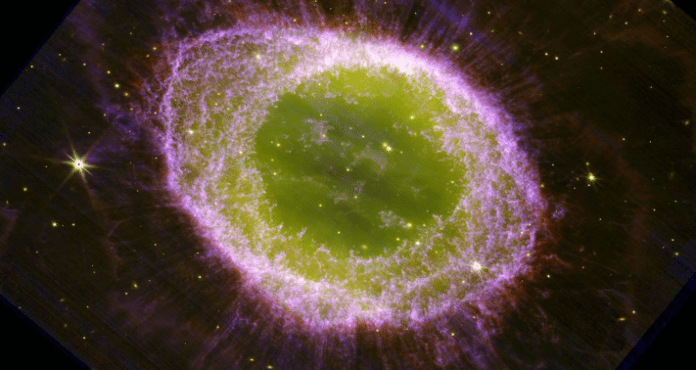Astronomers have used the James Webb Space Telescope for a fresh perspective of an iconic celestial favorite called the Ring Nebula.
The new image captures never-before-seen details within the colorful nebula, located in the Lyra constellation about 2,600 light-years from Earth.
The structure of the Ring Nebula can be glimpsed through amateur telescopes and has been observed and studied for years.
The planetary nebula, which despite its name has nothing to do with planets, is home to the remnants of a dying star as it releases the bulk of its mass.
Planetary nebulae usually have a rounded structure and were so named because they initially resembled the disks from which planets form when French astronomer Charles Messier discovered the first one in 1764.
The nebula was created as a dying star, called a white dwarf, began shedding its outer layers into space, creating a complex structure of glowing rings and expanding clouds of gas.
“The James Webb Space Telescope has provided us with an extraordinary view of the Ring Nebula that we’ve never seen before. The high-resolution images not only showcase the intricate details of the nebula’s expanding shell but also reveal the inner region around the central white dwarf in exquisite clarity,” said Mike Barlow, University College London professor emeritus of physics and astronomy and colead scientist of the JWST Ring Nebula Imaging Project, in a statement.
Source: CNN

















